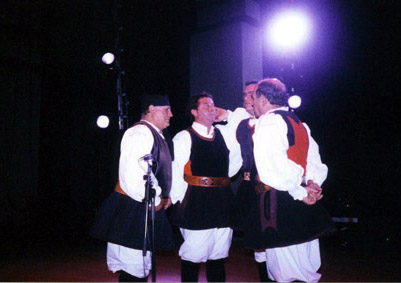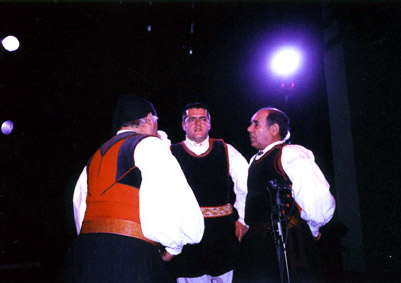This "coro" form of chanting requires a group of four male voices, referred to as "Oche", "Bassu ","Contra", and "Mesu Oche". The voice referred to a "Oche " is the one who carries the "canto", taking charge of the verbal singing (usually citing love lyrics with an Arcadian style or elements improvised based on his personal experiences). The timber is tenor or baritone for the "Oche"; guttural and in the throat (ingolato) for the "Bassu" (base), il "Contra", is a hollow and blurry voice (sfocato); and the "Mesu Oche", is the falsetto.

These last three voices blend together (chanting), generating sounds based on non-sense, such as la - la and etc., in order to enrich the harmony. Because of the guttural voices and the asymmetrical rhythms, many similarities can be found in the polyphonic Sardinian chant, which has Oriental, African and Oceanian styles. The type of chanting group described are referred to a "I Tenores di Bitti" and are aptly enough from a village callled Bitti (located in Nuoro, which is the main city in the center of Sardinia). Generally, they don't use written texts for their lyrics - as this is a very common feature in the pastoral culture - handing down lyrics from father to son. The Tenores' chants are normally based on this use of improvised lyrics dealing with common themes taken from everyday experiences such as, rural life, love, social issues, religion and satirical poetry. Additionally, their repertoire includes chants based on classical poems written by famous Sardinian authors.
During the performance the singers face each other in a circle. They alternate moments in which they dance, holding each other tightly by the arms, spinning around following a specific sequence of steps and skips, in order to announce the strength of their singing and to express the social coherence they feel within. One of the profound experiences of the Tenores' chants, is the possibility to actually feel a strong magnetism and energy that embodies this truly compelling land of Sardinia
